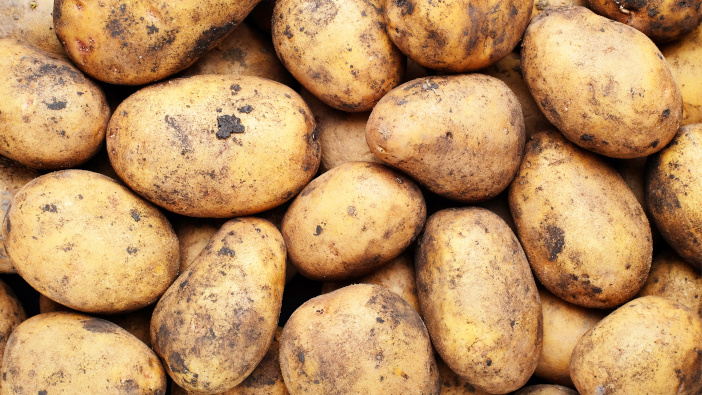As potato plating starts across the UK, two Hutchinsons agronomists, each covering a different area, have reported on the progress of their growers.
 Liam Hayton, Yorkshire
Liam Hayton, Yorkshire
Settled weather during March has allowed some growers to start planting early packing and processing varieties, although some soils are still relatively cold at 6.5-7C, so few were rushing in.
Land has generally been working quite nicely for those preparing seedbeds, which is a welcome contrast to this time last year. With considerable variation in soils across this region, understanding their properties, particularly macro and micro nutrient levels, is essential for tailoring seedbed and following nutrition to get the best out of crops in terms of yield and marketability.
Equally important is using good quality seed. Last year there was a shortage of seed in the market, with some at lower grade than normal, resulting in a few issues in ware crops later in the season. Seed supplies are relatively tight again this year, so check stocks carefully before planting. Two key issues to look for are any signs of rot, or black dot – the latter can lead to rhizoctonia.
Minimising weed competition is fundamental to giving crops a good start, so make sure seedbeds are clean before planting, and focus on pre-emergence control to minimise crop risks. Bindweed and fat hen are two main issues for many growers. Metribuzin will be effective on fat hen, and post-emergence options, such as carfentrazone, will be required to target tougher weeds such as bindweed. As ever, tailor chemistry to the weed spectrum and variety where possible, recognising any varietal sensitivity to metribuzin.
Finally, make sure soil has been tested for Potato Cyst Nematode (PCN), to identify PCN levels and the species present. This helps tailor variety choice, as growing a resistant and tolerant variety is one of the best ways to manage risk. Support this with appropriate nematicide application – fosthiazate offers good persistency – and cultural controls, such as removing volunteers in other crops.
 Jack Lane, Herefordshire
Jack Lane, Herefordshire
Planting has got underway in a few areas, as soil conditions and temperatures have improved.
March was relatively dry, but it followed an exceptionally wet winter, where some recorded up to 300 mm of rainfall between October and December, with the 2024 total exceeding 1,000 mm. That will have affected soil structure and health, so it is worth getting the spade out to check soils before planting and see whether remedial action is needed to rectify issues such as compaction, poor drainage, or slumping.
Wet weather is likely to have caused some nutrient leaching too, so testing the current status could be extremely valuable for finalising seedbed and early foliar nutrition programs. Alternative tests to the standard P, K, Mg, Ph, could be beneficial for understanding legacy phosphates that may be locked up within soils and not shown with standard soil analysis. This lets us make more informed decisions around starter fertiliser choices.
Growers in the River Wye and Usk catchments are currently under particular pressure from regulators to reduce risks from phosphate pollution, so anything we can do to improve nutrient use efficiency will be of benefit, both environmentally and financially.
Applying microgranular placement fertilisers, such as Primary-P, in close contact with the rhizosphere of the tuber at planting could be a really effective way of accurately meeting early crop requirements and stimulating root development. Far lower rates of fertiliser are used on soils with higher indices, where typically, high rates of conventional seedbed fertiliser are not necessarily required, or utilised effectively. We have seen good yield responses in potatoes, maize and other crops, so it is cost-effective and environmentally beneficial.
In the interests of bringing greater precision to nutrient management, it is also worth testing any organic manures or digestate before application, rather than relying on RB209 figures. We have seen that actual levels can vary widely from published figures, so we need to know what is actually being applied in order to tailor nutrition programmes accordingly, and minimise the risks of under, or over-applying nutrients.


